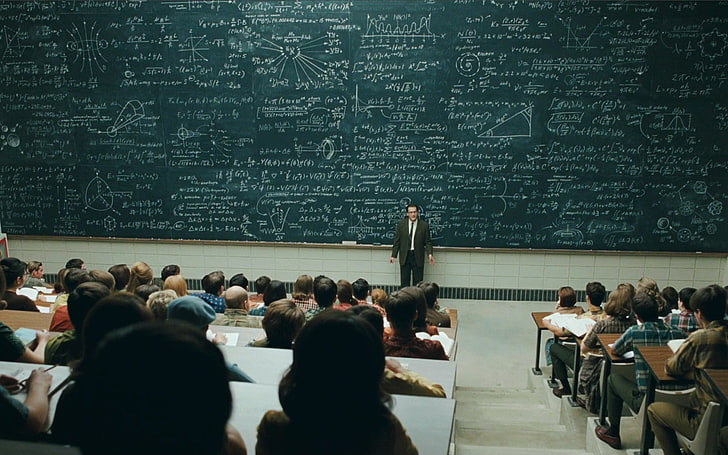Operant Conditioning & Its Principles(Basics)
Operant Conditioning & Its Principles

Operant conditioning:
Operant conditioning is a type of learning in which the probability of the preceding behaviour occuring is increased or decreased based on the favourable or unfavourable consequences of the behaviour. Favorable consequences reinforce behaviour, whereas unfavourable consequences result in punishments.
Also read: top best universities in Sydney
Experiments:
B. F Skinner conducted an experiment to study operant conditioning in a highly controlled environment. A rat was kept in a controlled environment in a box known as Skinner’s box. Outside the box was a food packet. Obtaining a food packet was linked to pressing a lever inside the box. When the rat inadvertently pressed the lever, the food was presented. After several repetitions, the rat realised that getting food was associated with pressing the lever. As a result, whenever the rat desired a food packet, she pressed the lever. Skinner referred to this as reinforcement.
Principles of Operant Conditioning:
Principles or stages involved in operant conditioning are:
Reinforcement (Central Concept )
Punishment
Shaping and stimulus generalization and discrimination similar to that in classical conditioning.
These are explained in detail as follows:
Reinforcement (Main Idea):
Reinforcement is a phenomenon in which a stimulus increases the likelihood of repeating previous behaviour. The pressing of the lever in Skinner’s experiment can be referred to as reinforcement.
Reinforcer:
Reinforcement is a phenomenon that involves Reinforcer. Reinforcers are any stimuli that increase the likelihood that a previous behaviour will be repeated, such as food, bonuses, toys, chocolates, salary, and so on. A reinforcer for one person may not be a reinforcer for another. Everything is up to the individual. Reinforcers can be primary (satisfies biological needs), secondary (assists in meeting primary needs), positive (adds a stimulus to repeat the preceding behaviour), or negative (removes a specific stimulus to repeat the preceding behaviour). This is covered in detail in the article Reinforcement in operant conditioning.
Reinforcement Schedules:
Scheduling of reinforcement refers to the process of reinforcing a desired behaviour at a specific frequency and timing. These timetables can be continuous or intermittent.
Continuous schedule refers to reinforcing the behaviour every time it is repeated, such as when a child wants to learn the first ten digits and we reward him every time he learns a single digit. In other words, after learning every single digit, we reinforce his behaviour.
When a behaviour is not reinforced every time it is repeated, we refer to it as a partial schedule. For example, it is impossible to praise a child for learning every digit when his goal is to learn 100 digits at once. There are four types of partial schedules, which are explained in the article Reinforcement in Operant Conditioning.
Punishment:
Punishment is defined as any stimulus that reduces the likelihood of a preceding behaviour being repeated; for example, if we receive a shock for something, there is very little chance that we will repeat that behaviour. Removing the shock would have the effect of negatively reinforcing it, i.e. removing an unpleasant stimulus. Punishment is classified into two types: positive punishment and negative punishment.
Positive Punishment weakens a response or behaviour by adding an unpleasant stimulus, such as beating a child for misbehaving with elders or spending ten years in prison as a robbery punishment.
Negative Punishment weakens a response by removing a Pleasant stimulus, for example, parents may not allow their child to party anymore due to poor academic performance, street crime may discourage us from hanging out until late at night, or demoting an employee for poor performance.
Shaping:
Shaping is an operant conditioning process that teaches complex behaviours by rewarding closer and closer approximations to the desired behaviour.
Initially, everything related to the desired behaviour is praised, then only the closely related behaviour, and finally only the desired behaviour is rewarded, such as pigeons trained to rescue people lost at sea. Shaping is also used in behaviour modification, learning alphabets, vocabulary, a new language, musical instruments, and training mentally handicapped children. The majority of textbooks are organised using the shaping principle.
Classical conditioning is similar to stimulus generalisation and discrimination.
Also read: Investment Banks in Australia
Operant Conditioning Applications:
The concept of operant conditioning is used in classroom management, behaviour shaping, skill teaching, therapies, animal taming, and other areas.
Factors Affecting the Effectiveness of Reinforcers and Punishers
A few key steps can be taken to make the four behavioural contingencies more or less effective. These are some examples:
- It should come as no surprise that the faster you deliver a reinforcer or punisher following a response, the more effective it will be. This is referred to as immediacy. Don’t be perplexed by the word. If you look closely, you can see right away. If you ticket someone for speeding right away, they will stop speeding. If your daughter does well on her spelling test and you treat her to ice cream after school, she will be motivated to do even better.
2. The reinforcer or punisher should be situational. So, if you get good grades and your parents give you $25 for each A, and you only get money for school performance, the secondary reinforcer of money will have an even greater effect. This relates to our previous discussion of contingency.
3. However, you are more likely to work harder for a $25 A than for a $5 A. This is known as magnitude. Another example is premeditated homicide or murder. If the penalty is life in prison with the possibility of death, it will have a greater deterrent effect than simply giving 10 years in prison with the possibility of parole.
4.
Events can cause a reinforcer or punisher to become more or less reinforcing or punishing. These are known as motivating operations, and they can take the form of establishing or abolishing operations. To begin, an establishing operation occurs when an event increases the potency of a reinforcer or punisher. Reinforcers become more likely to occur, and punishers become more punishing (i.e. less likely to occur). Second, an abolishing operation occurs when an event reduces the potency of a reinforcer or punisher. Reinforcers become less reinforcing (that is, less likely to occur) and punishers become less punishing (i.e. more likely to occur)
5. Every individual is unique. Behavior will be motivated by reinforcers. That is an unquestionable universal occurrence. However, the same reinforcers will not work for everyone. This demonstrates diversity as well as individual differences. Before implementing any type of behaviour modification plan, whether on yourself or on someone else, you must ensure that the appropriate reinforcers and punishers are in place. A fine may deter tax evasion in the lower and middle classes, but a threat of jail time may deter it in the upper classes. Punishers discourage problem behaviour in this case, but not in the same way for everyone.

